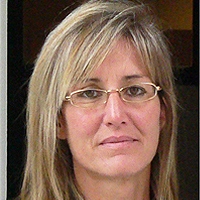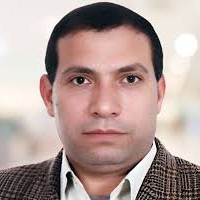latrogenic Pneumothorax Caused by Thoracic Puncture Secondary to Anti-aging Medicine
Published on: 27th July, 2023
Introduction: Pneumothorax is defined as air in the pleural cavity, the iatrogenic cause happens after invasive procedures as thoracic needle aspiration, central line placement, pacemaker placement, etc. Nevertheless, it is possible to be found in non-medical procedures, such as alternative medicine, more specifically acupuncture. There are medications used against aging that FDA has warned to be used only in its first objective, an example is procaine hydrochloride.Case: A 63 y/o female, Mexico City resident, with anxiety, came to a follow-up appointment for an aging cohort, where CT, PFT, and laboratories are made for pulmonary healthy subjects to investigate normal lung aging and how other environmental factors can affect the lungs; at physical examination, we did not find any pleuropulmonary syndrome, but in the CT a left Iatrogenic pneumothorax was found; we re-asked for antecedents and she described that 15 days before the date she had 2 punctures in the middle clavicular line to apply procaine hydrochloride as an anti-aging treatment.Discussion: There is diverse evidence of adverse effects associated with acupuncture, and even if pneumothorax has a small percentage of incidence, in some cases it can be severe and can even cause fatalities.Conclusion: The pneumothorax in this case was iatrogenic due to the thoracic puncture for an anti-aging treatment, with a total resolution with conservative treatment, however we as health professionals have the responsibility to inform our patients that initiatives of administration ways can cause important complications.
Antimicrobial resistance of Klebsiella pneumoniae strains isolated from urine in hospital patients and outpatients
Published on: 26th February, 2021
OCLC Number/Unique Identifier: 8982640435
Background: Klebsiella pneumoniae is a bacterial species that often causes infections in humans. Infections occur most frequently in hospitalised or immunocompromised patients and are treated with antimicrobials. In recent decades, K. pneumoniae has developed significant resistance to many antimicrobials.
Objective: The main goal of this study was to determine the frequency of resistance of isolated K. pneumoniae strains from urine samples of hospital patients and outpatients, and to find evidence of ESBL strains and their resistance to certain antibiotics.
Methods: During the study period, Klebsiella pneumonia was isolated from the urine samples of 430 patients. The procedure for processing of urine samples, identification, susceptibility toward antimicrobials and evidence of ESBL strains were carried out according to the recommended standards.
Results: Of the total K. pneumoniae isolates, 153 (35.6%) were isolated from hospital patients and 277 (64.4%) from outpatients. Strains isolated from hospital patients were resistant to each tested antibiotic. ESBL strains were detected in 169 (39.30%) samples, 92 (60.13%) from hospital patients and 77 (27.8%) from outpatients.
Conclusion: Strains of K. pneumoniae isolated from the urine of hospital patients and outpatients have developed significant resistance against all tested antibiotic substances. A higher occurrence of ESBL strains was observed in hospital patients than in outpatients. ESBL strains were resistant to all penicillins and almost all cephalosporins. Highly effective antimicrobials were amikacin, colistine, carbapenem and fosfomycin. The best therapeutic results were achieved when patients were treated with fosfomycin and imipenem.
Quality of Antenatal Care and its Determinants in the Urban-Rural Environment of Kamina, Democratic Republic of the Congo
Published on: 28th July, 2023
Introduction: Every woman should receive quality antenatal care during pregnancy wherever she lives. We carried out this research with the objective of evaluating the quality of antenatal consultations (ANC) in terms of periodicity, screening, and prophylaxis interventions during antenatal consultations in Kamina and to identify the determinants associated with inadequate ANC. Material and methods: This was a descriptive and analytical cross-sectional study carried out in 6 health facilities in Kamina over a period of 17 months with 476 women who had given birth having attended antenatal consultations at least once. A scoring grid of periodicity standards, screening, and prophylactic interventions with a score of 40 was used to qualify the ANC as adequate. Logistic regression was performed to identify the determinants of inadequate ANC. Results: 40.3% of mothers had reached at least 4 antenatal visits (3.4±1.36); 21.2% had started the ANC no later than 16 weeks for an average age of 22.8 weeks ± 6.19. Overall, 72.5% of pregnant women had benefited from ANC qualified as inadequate. After adjustment, the determinants of inadequate ANC were multigestity (aOR=1.86[1.08-3.19]), low level of education of the mother (aOR=3.93; 95% CI=[2, 08-7.42]), and attendance at a first-level health facility (aOR=3.22; 95% CI=[2.06-5.05]. Conclusion: In the majority of cases, the ANC received by pregnant women in Kamina is inadequate. The determinants thus identified should serve the actors to direct the means to improve the quality of antenatal care in Kamina.
Myxedema coma in COVID-19
Published on: 31st July, 2021
OCLC Number/Unique Identifier: 9146322981
SARS-CoV-2 infection is associated with thyroid disorders. It has been reported that myxedema coma (MC) can be complicated with COVID-19. COVID-19-related thyroid disorders consist of a broad spectrum of thyroid dysfunction, from thyrotoxicosis to decompensated hypothyroidism. It is possible that both primary and central thyroid disorders are induced by COVID-19 due to systemic inflammatory and immune responses. We experienced two cases in which patients with COVID-19 developed MC with central hypothyroidism. It is likely that MC affected the severity of COVID-19. It is necessary to consider the existence of MC during SARS-CoV-2 infection. We propose the potential mechanisms.
Blood disorders: Touching of erythrocytes
Published on: 30th December, 2020
OCLC Number/Unique Identifier: 8999929058
In general, Erythrocytes may referred to as corpuscle (Red Blood Cells). These erythrocytes will play a significant role in our body. It carries the element round the body and produce dioxide back to lungs. It acquire the element from the lungs then move towards the guts wherever the pure blood is then passed round the body. Erythrocytes covers nearly 1/2 your blood. The mature human erythrocytes is small, Circular, and biconcave; it seems dumbbell-shaped at Look.
An overview of the influence of climate change on food security and human health
Published on: 18th January, 2023
Climate change is increasing the frequency of climate-related disasters, creating greater risks of hunger and the breakdown of food systems. The sustainability of our planet is currently a major concern for the global community and has been a central theme for a number of major global initiatives in recent years. Climate change has prevalent, multi-faceted, and temporal impacts on food security. Higher temperatures, water scarcity, extreme events like droughts and floods and greater CO2 concentrations in the atmosphere have already begun to impact staple crops around the world. The warming climate is already taking a toll on human health, causing widespread hunger and illness that will grow exponentially worse, and will pose a major threat to human well-being. In this article, an attempt has been made to discuss some critical issues relevant to the four dimensions of food security and to provide broader perspectives on climate change and its impacts on the food system, food security and human well-being.“Humanity is facing a rare challenge. But it is a common challenge. There are no sides in the fight for climate justice” (Kofi Annan’s message prior to the UN Climate Conference in Copenhagen 2009).
Studies on some spices and herbs: Chemical composition, health benefits and functional properties
Published on: 6th February, 2023
A comprehensive study was carried out to assess the microbiological, nutritional, biochemical and essential oil characteristics of three Egyptian traditional cultivars seeds, namely, cumin (Cuminum cyminum) and coriander (Coriandum sativum) spices as well as basil whole herb (Ocimum basilicum) collected from different Egyptian export centers as being ready for export. The found values for humidity in dry seeds of cumin (7.4%) and coriander (6.4%), as well as total ash and ash insoluble in acid (in cumin 7.7% and 0.74%, but in coriander 5.3% and 0.55%, respectively), were lower than the maximum limits indicated by the Egyptian Specification Standards (ES) and by International Standards Organization (ISO) for cumin and coriander seeds. Analysis of essential minerals in seed spices and herbs indicated that they were rich in K, Ca, Na, Fe and Zn. The total bacterial count was low content in seeds of cumin and coriander as well as fresh whole basil herb. The microbiological load in all tested seed spices and herbs was found lower than those indicated by the ES and ISO for cumin and coriander seeds. Yields in hydro-distilled essential oils (EOs) were the highest in cumin seeds (3.762%), while both coriander and basil herbs had lower amounts (0.285% and 0.686%, respectively). EOs contents were found higher than the maximum limits for cumin (1.5% - 2.5% on a dry weight basis), but within the limits for coriander (0.1% - 0.5% on a dry weight basis) as indicated by the ES and ISO for cumin and coriander seed oils. Gas chromatography of extracted EOs from seeds of cumin and coriander as well as basil herbs indicated the presence of 41, 35 and 47 compounds, respectively, where cumin aldehyde was the major component in cumin volatiles but was linalool in volatiles of both coriander seeds and basil herbs. EOs of basil herbs grown in Egypt were of the high linalool chemotype which was characterized by high contents of linalool and relatively lower amounts of eugenol. However, the major compounds in the three tested EOs from seeds or herbs grown in Egypt are in accordance with literature reports from different parts of the world. Volatile oil components in EOs of the three tested Egyptian spices and herbs were classified into groups, based on the relative area (%). The proportion of the major and the other main components in EOs from seeds of cumin and coriander cultivars were within the ranges indicated by both the ES and ISO for cumin seed oils (cumin aldehyde between 15% - 46%) and for coriander seed oils (linalool between 65% - 78%). The aim of the present work was to Assessment study certain commonly used Egyptian spices and herbal products for characterizing their physical, biochemical and microbiological properties.
Cardiac metastases from merkel cell cancer: A case report and review of literature
Published on: 5th July, 2022
OCLC Number/Unique Identifier: 9575034003
A 61 - year-old physically fit and athletic man presented to his dermatologist with a 10 mm raised, dark lesion on the left side of his neck. A complete skin examination did not show any other abnormal areas of skin. Pathology was found consistent with Merkel cell cancer, and the patient was referred to surgery for a wide local excision and sentinel lymph node biopsy. A PET scan did not show any other areas of concern. At surgery, one of two sentinel lymph nodes was found to be involved with Merkel cell cancer and the patient received postoperative radiation.
Knowledge of diabetic patients regarding diabetes management, diet, lifestyle modification and blood glucose monitoring
Published on: 14th February, 2023
Hyperglycemia due to abnormalities in insulin production, insulin action, or both characterizes the metabolic disorders known collectively as diabetes [1].
Angiotensin II type 1 receptor and the activation of Myosin Light-Chain Kinase and Protein Kinase C-βII: Mini Review
Published on: 17th February, 2020
OCLC Number/Unique Identifier: 8534733539
The involvement of the angiotensin II type 1 receptor in the Frank-Starling Law of the Heart, where the various activations are very limited, allows simple analysis of the kinase systems involved and thence extrapolation of the mechanism to that of angiotensin control of activation of cardiac and skeletal muscle contraction. The involvement of phosphorylation of the myosin light chain in the control of contraction is accepted but not fully understood. The involvement of troponin-I phosphorylation is also indicated but of unknown mechanism. There is no known signal for activation of myosin light chain kinase or Protein Kinase C-βII other than Ca2+/calmodulin but the former is constitutively active and thus has to be under control of a regulated inhibitor, the latter kinase may also be the same. Ca2+/calmodulin is not activated in Frank-Starling, i.e. there are no diastolic or systolic [Ca2+] changes. I suggest here that the regulated inhibition is by myosin light chain phosphatase and/or β-arrestin. Angiotensin activation, not involving G proteins. is by translocation of the β-arrestin from the sarcoplasm to the plasma membrane thus reducing its kinase inhibition action in the sarcoplasm. This reduced inhibition has been wrongly attributed to a mythical downstream agonist property of β-arrestin.




